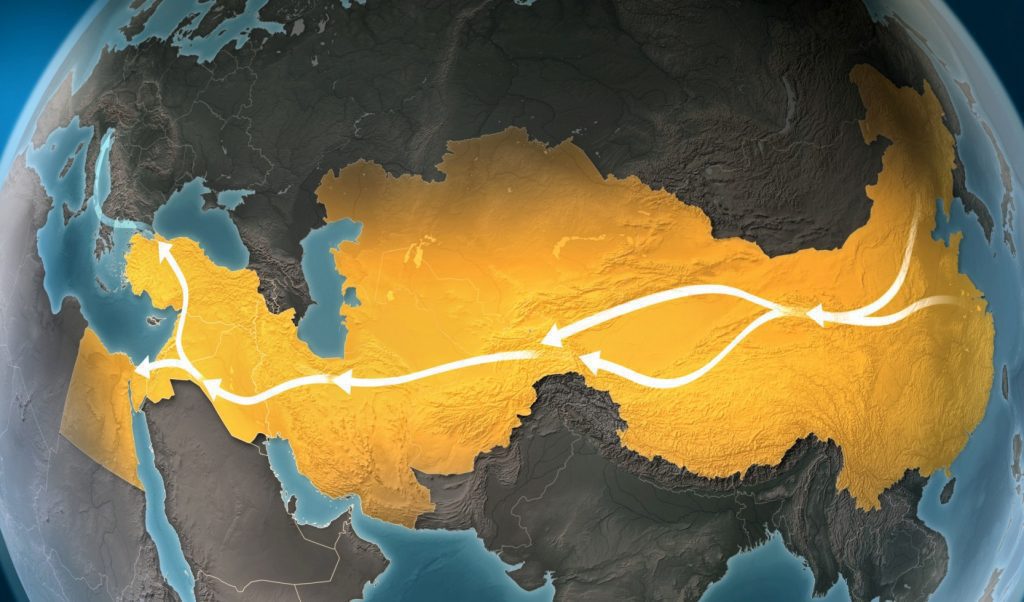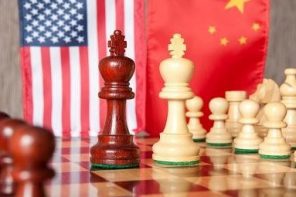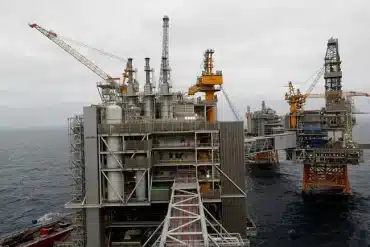One Belt,One Road initiative sets to tilt the balance of power in China’s favour

In recent years, we are observing China’s progressive efforts to untangle its economic growth from the US-led economic institutions such as the World Bank and IMF by establishing new sets of institutions such as Asian Infrastructure Investment Bank (AIIB), New Development Bank and Shanghai Cooperation Organization (SCO). On top of all these Chinese initiatives, the One Belt, One Road (OBOR) can be the game-changer that will shift the balance of power, if not in China’s favor, definitely away from the US.I think the Hegemonic Stability Theory proposed by Robert Gilpin can be an effective theoretical framework to comprehend this shift. He outlined three different subsets of power relations that modify international hierarchy:
1 . After major events, the power that sets the new rules of the game for international political economy emerges as the new dominant power.
2 . The dominant power lets the system works as it is, as the rules of the system are set by the hegemon itself.
3 . When the hegemon starts to abandon the rules of the game it created for economic, social and political exchange in the international political economy, the power of that hegemon declines.(1)
The OBOR initiative alludes to this transition in play, where China is gradually becoming the power to dictate the new rules of the game and the US is abandoning the rules that it once set. When going through Gilpin’s process of hegemonic shifts, what hooked me was the direct connection he draws between international political economy and the shuffling of the hierarchical statuses of states in the international system. In the aftermath of wars and great depressions when the international system needs reordering, the state that sets the new ‘rules of the game’ is the one who emerges as the dominant power, argues Gilpin. He considers economy as the key determinant of the international power hierarchy. In the world of scarcity, distribution of economic resources dictates both international and domestic politics. Hence, both state and non-state actors struggle to gain more control over the economic system and try to bend it to their favour.
They do so as to be able to translate that into greater political power in the international political system and to further rise up the power hierarchy. (2) The recent ‘complex and profound changes that keep occurring in the world as a result of the financial crisis (3) – where the international trade and investment landscape and rules for multilateral trade and investment are undergoing major adjustment – provides the gap that Gilpin suggests states needs to consider in reorganizing the new ‘rules of the game’. (4)
OBOR ROADMAP
OBOR is a massive infrastructure project comprises of two main parts: a series of land routes collectively known as the Silk Road Economic Belt, and a sea route referred to as the 21st Century Maritime Silk Road that connects South China Sea to the Indian Ocean and the Mediterranean Sea. (5) The land routes
of the OBOR connects China, Central Asia, Europe (the Baltic), and Russia, intermediated by the sea routes linking China with the the Mediterranean Sea, the Persian Gulf, the Indian Ocean. Thus, collectively this initiative strives to connect China with East Asian Economic circles at one end of the continuum and European economic circles at the other.
The first corridor in this series of corridors will connect – by means of railroads – China with Mongolia and Siberia: the energy rich regions. Next is the China-Pakistan Economic Corridor (CPEC) that gives China access to Gwadar, a Pakistani deep-water port on the Arabian Sea. Another projects includes investing in railroads, highways, ports, canals and pipelines in India, Myanmar, and Bangladesh in order to connect China with the Indian Ocean. Yet another corridor in this series is called the China-Indochina Peninsula Economic Corridor. This particular corridor links the South Asian market to China through high-speed rail and ports. Two major rail roads are to be constructed as part of the One Road One Belt’s land route. By means of one of these rail roads China will connect itself to the financial hubs of Germany, Poland, and Netherlands via Central Asia, Iran and Turkey, while the other ‘the New Eurasian Land Bridge’ will link China to Europe via Russia. Final corridor in this series – that China has not officially identified as part of the OBOR – is one incorporating ports of Djibouti (a naval base is set to be built in Djibouti by China), Tanzania, Kenya and Mozambique through Red Sea, Mediterranean and South-eastern Europe. (6)
On land, therefore, OBOR will focus on constructing Eurasian Land Bridge, China Central Asia, China-Mongolia-Russia and China-Indochina Peninsula. While along the sea China will focus on building secure, efficient, and smooth transport routes linking major ports on the OBOR roadmap. (7)
CHINA’S GOALS FOR THE OBOR
The world has already started to notice and probe into China’s ambitions with this colossal infrastructure initiative. ‘With its Maritime Silk Road, China is tapping the world’s oceans for its own strategic purposes. It’s a bold plan that is causing unease in India and the United States – and also has implications for Europe’. (8)
With OBOR initiative China will leverage its different regions’ comparative advantages, adopting a proactive strategy of opening-up even further, through cooperation between those numerous regions and strengthening interaction. Over all it will help the openness of the Chinese economy, comprehensively. (9) In order to strengthen its competitiveness China is focusing mainly on ‘enhancing the monopoly of state-owned corporations’. (10) Chinese engineering and construction companies have already taken up much of the load of developing the OBOR projects, backed by the Chinese government. To support these projects new financial institutions such as The Asian Infrastructure Bank are also being developed by China. ‘The Asian Infrastructure Investment Bank, which opened for business in January, is perhaps the best known of these. Together with the Silk Road Fund, a B&R-focused Chinese government fund, and the New Development Bank, a multilateral development organization formerly known as the BRICS Development Bank, the AIIB will lend nearly $200 billion to infrastructure projects over the coming decade.’ (11)
Still China is reluctant to accept the ‘political goals’ of OBOR, and even more unwilling to term the initiative a ‘strategy’.
Most importantly, China has re-evaluated and restructured its foreign policy for the facilitation of this new initiative. Their ‘new’ foreign policy includes incorporating cooperation and openness. Thus in this series, China has welcomed Pakistan and India into Shanghai Cooperation Organization and also pushing Iran to join in – to strengthen the regional bonds between these players. Beyond the region, China is setting other policies to cultivate friendly and well incorporated links, not just physically but also politically. Hence, it is strengthening ties with many European countries. Czech Republic can be a good example in this regard as China is trying to make Prague its foothold in the continent. Business worth around $4 billion has been finalized with Czech Republic in March this year. Furthermore, concentrating on the stability of the Middle East – crucial for the OBOR success – China has started taking a more active role in the region’s activities. That is why Xi Jinping was the first leader to visit Iran in January when the international sanctions were lifted. He also visited Egypt and Saudi Arabia. China also got involved in the mediation between rival groups in the Syrian Civil War. It has also joined hands with Saudi Arab to defeat Houthi rebels in Yemen. China sent People’s Liberation Army to participate in the counter-terrorism missions. (12)
All these activities and engagements with the world are keep the Chinese President very busy. Xi Jinping as a result is appearing in a string of international events: the APEC in Beijing, G20 in Hangzhou, the World Economic Forum in Davos – and everywhere he is preaching globalization and calling for deepening of the concept. (13) Thus, proposing a new set of rules for the game – proving to have bigger goals than merely economic. Still China is reluctant to accept the ‘political goals’ of OBOR, and even more unwilling to term the initiative a ‘strategy’. However, watching the international system as a whole one cannot ignore the political prospects of the initiative and its impact on the international hierarchy of great powers.
The importance of China’s offer of advancing the initiative collectively points towards a multi-polar world, with an openness in the economic systems, diversity in cultures, more regional cooperation, superior IT application. All towards achieving and upholding the global free trade. (14) Thus, with the initiative of building the OBOR collectively, involving the world community and putting the collective interests before the self, hints on China’s aspirations beyond economic. ‘Reflecting the common ideals and pursuit of human societies, it is a positive endeavor to seek new models of international cooperation and global governance, and will inject new positive energy into world peace and development.” (15) Hence, China will emerge as the great power that is taking up more and more spaces in leading the world community towards “world peace and development”.
AMERICAN RESPONSE TO OBOR
Policy makers in Washington are downplaying the OBOR terming it another publicity stunt by China for securing Xi’s legacy and portraying the country as a benevolent power. According to them, China will fail to materialize the ‘vanity project’. (16) Thus, not a single hearing has been held by the Congress about the OBOR. According to Gal Luft, ‘Washington has not only refused to acknowledge the importance of the B&R[OBOR]; in some cases, the Americans have attempted to undermine it, as when the United States futilely opposed the creation of the AIIB”. (17) Thus, to Luft, this American approach is ‘misguided’, for it leaves China the sole power to dictate the new rules of the game – especially the Eurasian regional economic and political future. This approach not only leaves China to set its own rule but also denies the American investor the opportunity to profit from the mega infrastructure projects of OROB. This was exactly how the US reacted to the AIIB, a China-led initiative. Economist declared China to be the winner in the long rivalry between the US and China, as it was successful to establish the bank. Not only did China manage that it also managed to get many of the US allies to get on board in the project, regardless of the US’s tireless lobbying against it. This whole process left the US ‘looking churlish and ineffectual’. (18)
American approach is ‘misguided’, for it leaves China the sole power to dictate the new rules of the game – especially the Eurasian regional economic and political future.
Now once more the US is putting itself in an uncomfortable position with some of its closest allies who sees the OBOR as a forward-looking project that offers an end to the miseries of the world economy. This coupled with other measures by the US, such as the snubbing China’s calls for increased voting share at the IMF, pushed China to establish their own multilateral lender. This ‘snubbing’ policy of Washington also gave China the opportunity to develop alternative institutions with the knowledge that it could find customers among its less scrupulous neighbors. (19)
relevant: CHINA’S RESPONSE TO DECOUPLING, EXPLAINED
TILTING THE BALANCE
Regardless of the fact that China is reluctant to even call this initiative a strategy or link it to anything political, the OBOR cannot be disentangled from international political economy. Its effects on international politics are going to be immense. OBOR has significantly boosted investment and trade. Trade between China and its partners along the route has surpassed US$ 1 trillion in 2015, making a quarter of the total Chinese trade value. Chinese exports to OBOR members have exceeded those to the US and the European Union – China’s top two export destinations – and the gap is widening. (20) Due to this initiative China is making a rapid transition from being ‘the world’s biggest goods exporter to a major capital exporter’. Outbound direct investment to the belt and road nations grew 23.8 per cent in 2015, and 60 per cent year on year in the first half of 2016. (21) As a result of the boost in China’s economy, it is rapidly emerging as the state that sets Gilpin’s ‘new rules of the game’ by reshuffling global power hierarchy of the international system.
REFERENCES
1. Gilpin 1983
2. Gilpin, “War and Change in World Politics” 1983, pp. 67-68.
3. http://english.gov.cn/archive/publications/2015/03/30/content_281475080249035.htm
4. ibid
5. ibid.
6. Gal Luft(2016) “China’s Infrastructure Play”September/October 2016 69
7. http://english.gov.cn/archive/publications/2015/03/30/ content_281475080249035.htm
8. http://www.spiegel.de/international/world/china-increasingoverseas- ambitions-with-maritime-silk-road-a-1110735.html 9. http://english.gov.cn/archive/publications/2015/03/30/content_281475080249035.html 10. http://thediplomat.com/2017/02/chinas-economy-the-new-normaland-the-virtuous-circle/
11. China’s Infrastructure Play September/October 2016 69 Gal Luft
12. Luft Gal (2016) “China’s Infrastructure Play” September/October 2016
13. http://thediplomat.com/2017/02/chinas-economy-the-new-normaland-the-virtuous-circle/
14. http://english.gov.cn/archive/publications/2015/03/30/content_281475080249035.htm
15. ibid. 16. Luft Gal (2016) “China’s Infrastructure Play” September/October 2016
17. China’s Infrastructure Play September/October 2016 69 Gal Luft
18. Anon, 2015 The Economist
19. China’s Infrastructure Play September/October 2016 69 Gal Luft
20. xi-jinpings-one-belt-one-road-strategy-showing-way-new-world
21. ibid.


